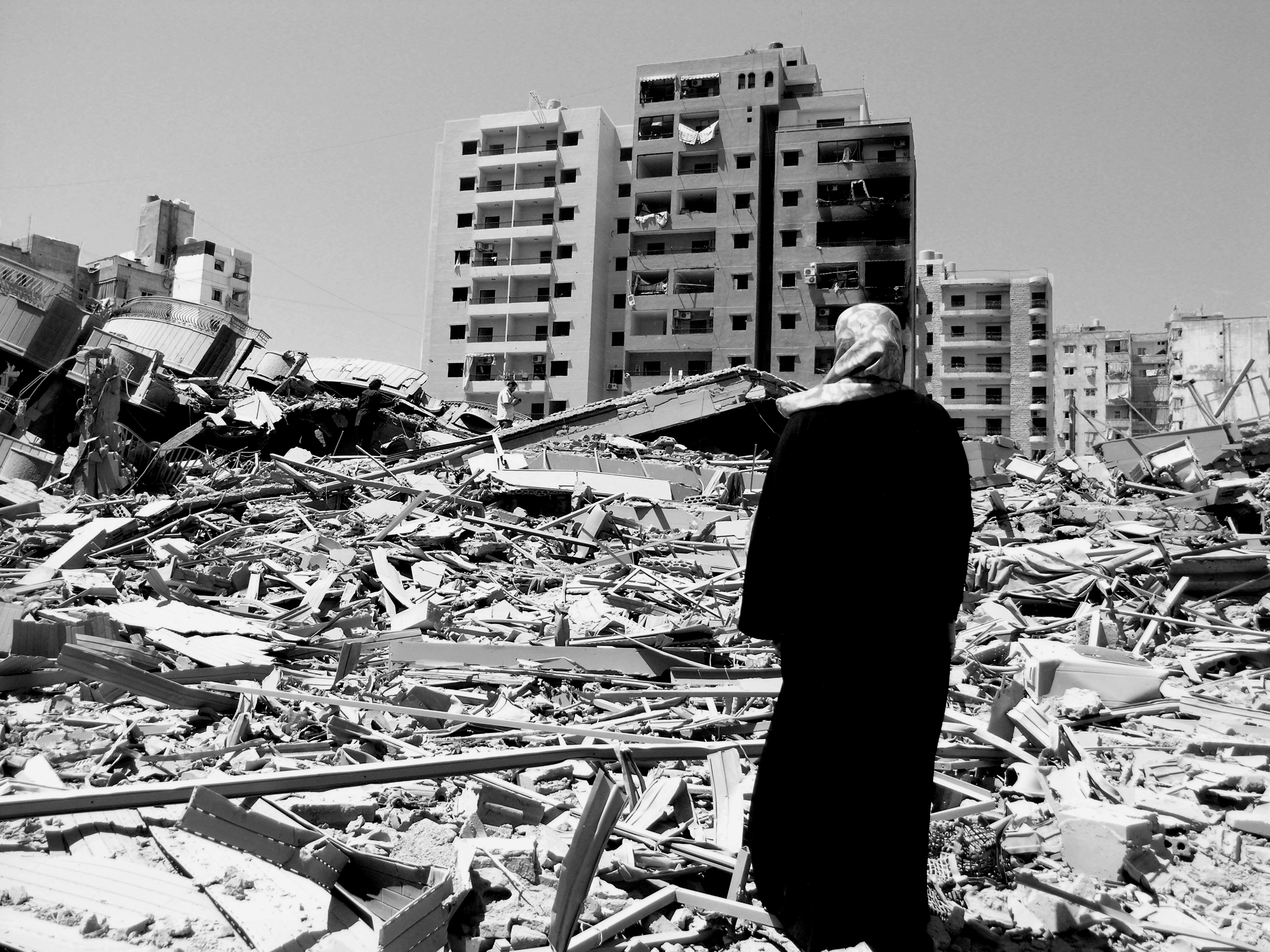
A woman looks at the destruction of Haret Hreyk after the ceasefire was declared on August 15th, 2006. ©2006 Derek Henry Flood
New York- I posted a new video on my still nascent youtube channel about covering a mass guerrilla funeral on August 17th, 2006 in Srifa, South Lebanon after the U.N. mediated ceasefire. My driver Kamal was from the neighboring village and was curious to revisit the area and check on the homes of his two brothers and their families who hadn’t left. Israeli UAVs buzzed overhead as the town buried its martyrs. Thirty coffins were interred in a mass grave which was then covered over with concrete slabs to seal the dead men into the soil for eternity. The heat and wretchedness of the event was the most intense thing I’ve ever experienced.While virtually all media accounts of the war described it as strictly between the IDF and Hezbollah, on the ground in South Lebanon, Harakat Amal-the armed wing of the “Movement of the Disinherited” and Hizb-i-Shuy’ui-i-Lubnani-the armed wing of the Lebanese Communist Party (Marxist-Leninist) fought the IDF in united front to defend South Lebanon and the Litani river from the invading forces. The Israeli invasion enhanced social cohesion amongst groups that had fought one another and which there had often been a great degree of animosity. The LCP had once fought Amal in the context of the civil war and Amal had once battled Hezbollah. The LCP’s local party headquarters had been demolished by the IAF if one needs context as the LCP cadres’ participation in the conflict. What fascinated me was the Guevarist theme of the LCP fighters.
A few years later I was leafing through Gilles Kepel’s Beyond Terror and Martyrdom at Kramer Books in Dupont Circle when I happened to see a reference on page 71 stating that, “Che Guevara was rumored to be from southern Lebanon.” Of course I haven’t heard this reference anywhere else. The wikipedia entry on Guevara says he’s Castilian, Basque, and Irish.
In a strange personal footnote to my experience, while photographing the event there was a gangly European photographer who I assumed was either Dutch or Scandanavian. He stood out even more because it was standing in the raised plow of a backhoe photographing from above. I wondered briefly who he was and how he knew about the funeral. A few weeks later I was back in New York walking with a friend exiting the turnstile of the West 4th street subway, the same super tall Dutch looking guy from Srifa was coming through the next turnstile the other way into the station. I didn’t bother to tell my friend because knowing he knew nothing about the international journalism scene, my shock would be lost on him. A year later when the NOOR photo agency was founded around the time of the annual Perpignan festival, I pieced it together to realize it was Kadir van Lohuizen that had crossed my path in South Lebanon and the West Village in the course of a month in 2006. Weird. I seriously doubt he recognized me that evening in the subway.